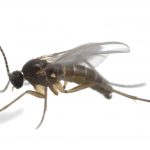Are you tired of buying houseplants only to have them wither and die within weeks?
If so, it might be time to try succulents. Once you know the steps for how to care for succulents, these plants become easy to care for and are perfect for busy people who want to bring some greenery into their homes (or offices).
Succulents come in a wide variety of shapes, sizes, and colours, and they require very little maintenance. However, despite being low maintenance, they still need proper care to thrive.
This succulent care guide will cover everything you need to know about growing and how to care for succulents, from choosing the right potting mix and watering schedule to identifying and treating common succulent problems.

Want the inside scoop on more gardening tips? Get early access to all my blogs and exclusive content by signing up for my newsletter!
Introduction to Succulents as Houseplants

Succulent plants have gained immense popularity as houseplants in recent years, and it’s not hard to see why.
With their unique shapes, vibrant colours, and minimal care requirements, succulents have become a go-to choice for both experienced and novice plant enthusiasts alike.
What exactly are succulents, you might wonder?
Well, these fascinating plants belong to the family of fleshy plants that store water in their leaves, stems, or roots. This adaptation allows them to thrive in arid environments where water is scarce.
Native to regions such as deserts and drylands, succulents have evolved to withstand intense heat and prolonged periods of drought.
One of the most remarkable features of succulents is their ability to retain water, making them highly resilient and low-maintenance houseplants.
Another reason why succulents have become popular as houseplants is their stunning variety.
From the classic rosette-shaped Echeverias to the spiky Aloe vera and the trailing Sedums, there is a succulent plant to suit every taste and style. Their unique shapes and textures add an intriguing element to any indoor space, making them perfect for both modern and traditional home decor.
Moreover, their low-maintenance nature makes them an ideal choice for busy individuals or those who may not have the greenest thumb.
Choosing the Right Succulent Plant for Your Home
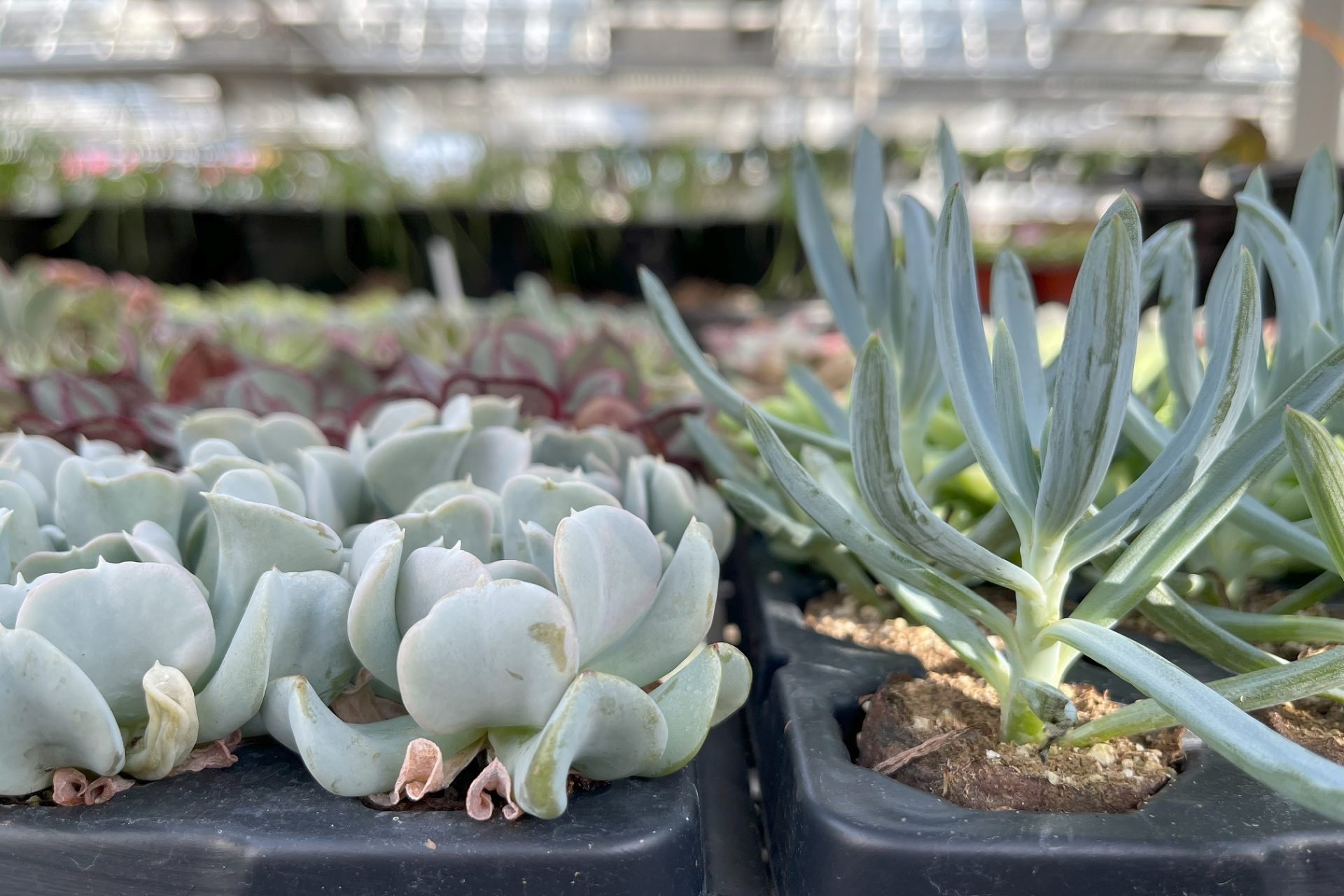
Choosing the right succulent plant for your home is the first step in ensuring successful care and growth.
You can find the perfect succulent that will thrive in your home environment by considering a few key factors:
1. Assess the Lighting Conditions in Your Home
Succulents require a significant amount of sunlight to grow and flourish.
Some varieties, such as Echeverias and Sedums, prefer bright, direct sunlight, while others, like Haworthias and Gasterias, can tolerate lower light levels.
Consider the location of windows and the amount of natural light each area receives throughout the day as this will help you determine which succulents will best suit your home’s lighting conditions.
2. Take into Account the Temperature and Humidity Levels of Your Home
Most succulents are native to arid regions and thrive in warm temperatures.
However, some species, such as Sempervivums and Agaves, can tolerate colder temperatures and even mild frost.
Assess the average temperature range in your home and choose a succulent that can adapt to those conditions.
Additionally, keep in mind that succulents generally prefer lower humidity levels, so if your home tends to be more humid, it’s important to select species that can withstand higher moisture levels.
3. Consider the Available Space in Your Home
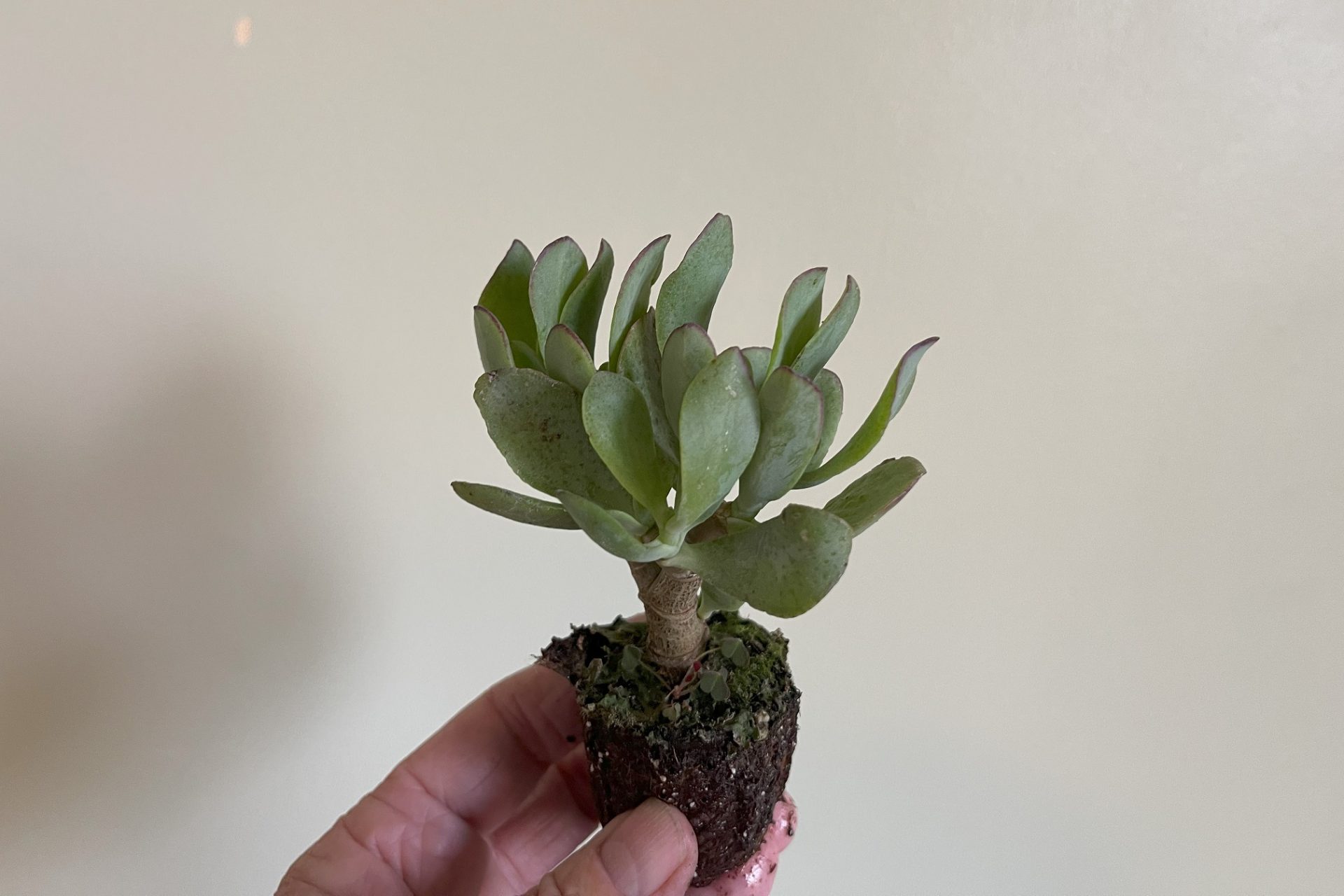
Some succulents, like Aloe Vera and Jade Plants, can grow quite large over time and may require more room to spread out.
On the other hand, there are compact varieties, such as Echeveria ‘Lola’ and Haworthia ‘Zebra Plant,’ that are ideal for smaller spaces or those looking to create a charming succulent arrangement.
4. Consider Your Own Personal Preference and Aesthetic
Succulents come in various shapes, sizes, and colours, offering endless possibilities for creative displays.
Whether you prefer the spiky allure of a Cactus or the rosette form of an Echeveria, choose a succulent that resonates with your style and complements your home decor.
How to Care for Succulent Plants’ Basic Needs

Understanding the basic needs of succulent plants is essential for their overall health and longevity.
These unique houseplants have adapted to survive in arid desert environments, making them relatively low-maintenance. However, they still require some specific care to thrive in indoor settings.
1. Succulents Need Plenty of Bright, Indirect Sunlight
Place them near a window that receives several hours of sunlight each day.
However, be cautious of direct sunlight, as it can scorch the leaves of some delicate succulent varieties. If natural light is limited, you can supplement it with artificial grow lights to ensure adequate brightness.
South-facing windows are usually the best choice, providing the most intense sunlight.
If you notice your succulents stretching or leaning toward the light source, it indicates that they need more sunlight.
2. Succulents Have Unique Watering Requirements

Succulents have specialized leaves and stems that store water, allowing them to withstand drought conditions. Unlike most houseplants, succulents do not thrive on frequent watering.
The watering frequency will depend on various factors, such as the succulent type, the pot size, and the environmental conditions.
Succulents may require more frequent watering during the active growing season, typically spring and summer. However, in the dormant period, usually winter, their water needs decrease significantly.
Therefore, it is crucial to avoid overwatering, which can lead to root rot and other issues.
Instead, adopt a “soak and dry” watering method.
Water the soil thoroughly until it is soaked, then allow it to dry out completely before watering again.
Soil hydration can be determined in two ways:
- Insert your finger about an inch deep into the soil – if it feels dry, it’s time to water.
- Or, with smaller pots, you may lift the pot to asses the weight. If the pot feels light, it’s time to water.
Avoid drenching succulent leaves when watering as pooling water can cause their leaves to rot.
Water succulents at the soil level, or allow the soil to soak up water in a shallow pan through holes at the bottom of the pot.
Remember, it’s better to underwater than overwater succulents. These plants have adapted to survive in dry conditions to tolerate periods of drought.
3. Succulents Require Unique Soil Blends

Succulents thrive in well-draining soil, as excessive moisture can lead to root rot and other issues.
A good succulent soil mix usually consists of a combination of potting soil, perlite, and coarse sand or pumice. This blend allows for excellent drainage while still retaining some moisture.
You can also add some perlite or coarse sand to regular potting soil to increase drainage capacity.
In addition to assessing before watering watering, providing adequate drainage for your succulents is essential.
Choose a well-draining potting mix specifically formulated for succulents or add perlite or pumice to improve drainage. This will prevent water from sitting in the pot, which can lead to root rot.
4. Succulents Prefer a Warm and Dry Environment
Succulents thrive in temperatures ranging from 60 to 80 degrees Fahrenheit (15 to 26 degrees Celsius). However, they can tolerate temperature fluctuations and even survive temperatures as low as 50°F (10°C) during their dormant period, which is winter.
It’s important to note that different succulent species have varying temperature preferences, so it’s essential to research and understand the specific needs of your succulents.
During the winter months, when temperatures drop, protect your succulents from frost and cold drafts near windows and doors that open to the cold weather.
Additionally, avoid placing succulents near heaters or vents, as the dry, hot air can dehydrate them.
5. Pruning & Grooming to Maintain Healthy Succulents

Pruning and grooming help maintain healthy and thriving succulent plants. While succulents are known for their low maintenance and resilience, they require some regular care to ensure longevity and aesthetic appeal.
Proper sanitation practices are essential to prevent the spread of diseases.
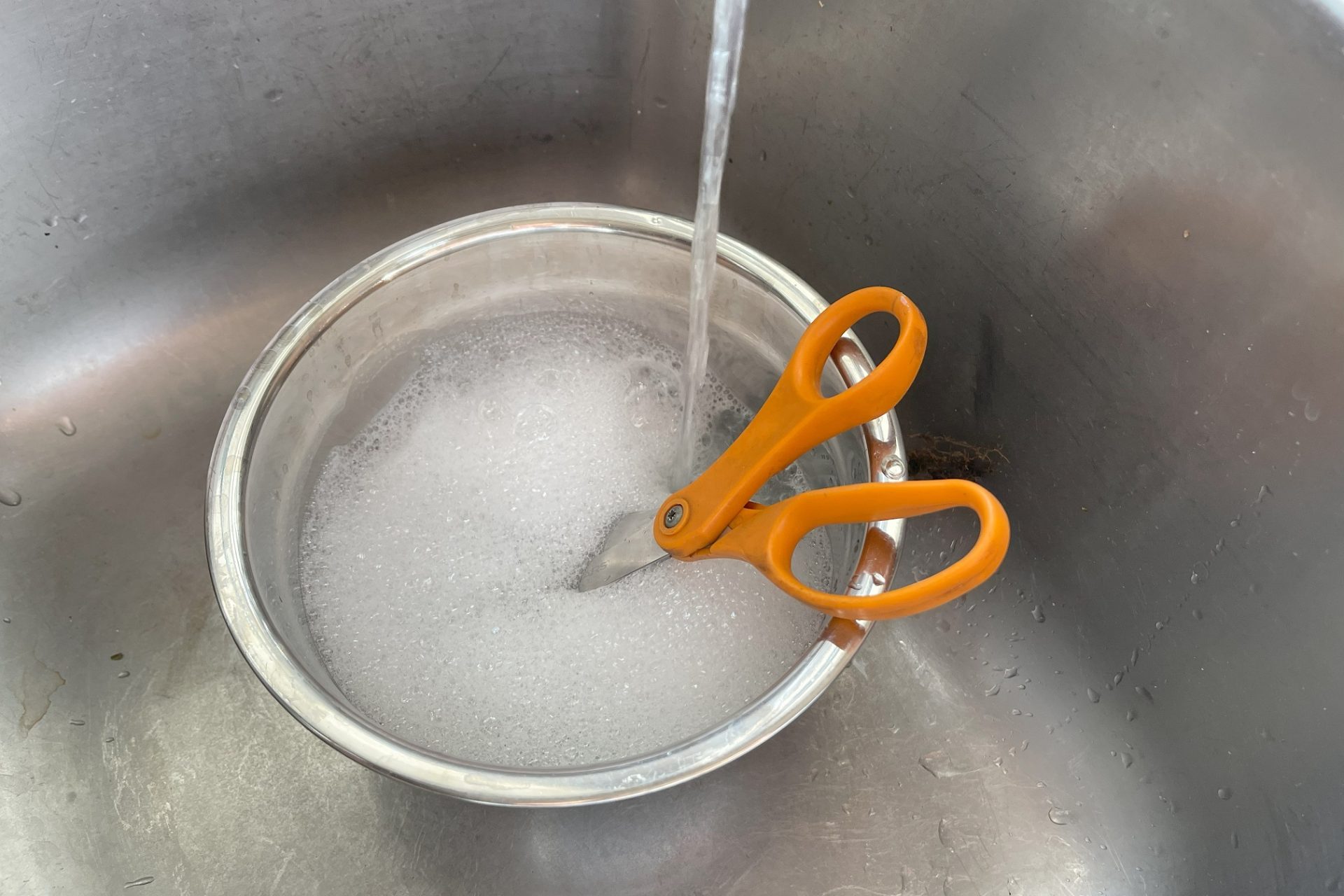
Always use clean tools when pruning or propagating your succulents, as contaminated tools can transfer pathogens from one plant to another.
Additionally, remove fallen leaves or debris from the soil surface to minimize the risk of fungal growth. This not only improves the plant’s appearance but also prevents the spread of diseases and pests.
Use a pair of clean, sharp scissors or pruning shears to carefully trim away any unhealthy parts of the plant.
Pruning can help control the size and shape of your succulents.
If your plants become leggy or overgrown, you can trim back the excess growth to encourage a more compact and bushy form.
Focus on cutting back the longer stems or branches, making clean cuts just above a leaf node or joint.
Grooming your succulents goes beyond just pruning; it involves tidying up the overall appearance and removing any debris or dust that may have accumulated on the leaves.
Use a soft brush or a gentle stream of water to gently clean the foliage, being careful not to damage the delicate leaves or disturb the roots.
Another grooming technique is removing offsets or baby succulents that grow around the base of the parent plant.
These offsets can be carefully detached and replanted to propagate new succulents.
Trimming off the baby succulents helps maintain the overall health of the parent plant and allows you to expand your succulent collection.
Remember to consider the specific care requirements of each succulent variety when pruning and grooming. Some succulents may be more sensitive to pruning, while others may require more frequent grooming due to their leaf structure or growth habits.
By incorporating regular pruning and grooming into your succulent care routine, you can ensure that your plants remain healthy, visually appealing, and continue to thrive for years to come.
How to Transplant Succulents

When it comes to potting, choosing the correct size and type of pot is important.
Succulents generally prefer shallow pots with drainage holes to prevent water from pooling at the bottom.
This helps prevent root rot and allows excess water to escape. Additionally, porous material, such as terracotta pots, can aid in evaporation and prevent waterlogged soil.
During the potting process, handle succulents with care.



Their delicate roots can be easily damaged, so gently remove the plant from its original pot and gingerly loosen the root ball before placing it into the new pot.
Distribute lightly moistened soil around the roots and provide a slight firmness to hold the plant in place.
After potting, water sparingly to allow the succulent to settle in its new environment for a few days before watering.
This allows any potential root damage to heal and reduces the risk of overwatering.
Once established, succulents generally require infrequent watering, allowing the soil to dry out completely between waterings.
Preventing and Treating Common Succulent Plant Diseases

Succulents are very resilient plants bothered by few pests and diseases. Let’s take a quick look at some things that may affect them.
1. Root Rot in Succulents
One of the most common diseases that affect succulents is root rot, caused by overwatering or poorly drained soil.
To prevent this, it is crucial to allow the soil to dry out completely before watering again. Additionally, make sure your succulent pots have drainage holes to facilitate the removal of excess water.
2. Fungal Infections in Succulents

Another prevalent issue is fungal infections, which can manifest as black spots, powdery mildew, or fuzzy growth on the leaves.
To combat fungal diseases, avoid overhead watering and ensure that your succulents are not crowded together, allowing for proper air circulation.
Also, remove any yellowed leaves from the plant, commonly seen growing low on the stem, or any leaves lying on the soil surface.
If you notice any signs of fungal infection, promptly remove the affected leaves and monitor. They may need to be treated with a fungicide formulated for succulents.
3. Insects that Affect Succulents
Succulents are also susceptible to common houseplant pests such as mealybugs, aphids, and spider mites.
These pesky critters can cause damage by feeding on the plant sap or leaving behind a sticky residue.
To prevent and treat pest infestations, regularly inspect your succulents for signs of pests, such as webbing, tiny insects, or distorted leaves.
You can manually remove the pests or use organic insecticidal soaps if detected early.
4. Etiolation in Succulents
Succulents can suffer from etiolation, which is a fancy horticultural term for a condition where they stretch and become leggy due to insufficient sunlight.
To prevent etiolation, ensure that your succulents receive at least six hours of direct sunlight daily.
If you notice signs of elongation, consider moving the plant to a sunnier location or providing supplemental grow lights.
Happy Succulent Gardening!
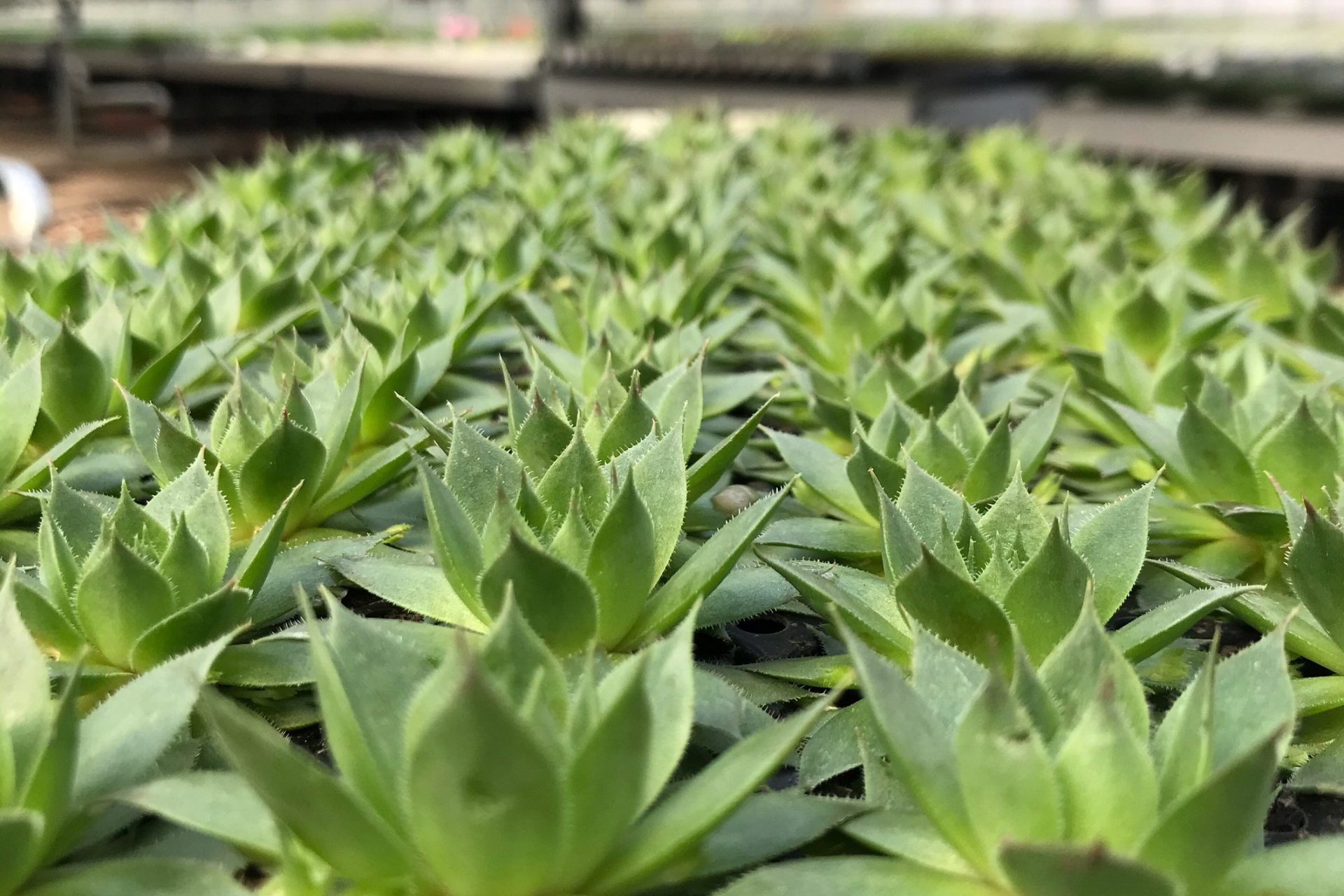
I hope you found this guide on how to care for succulents helpful and informative.
Remember to give them the right amount of sunlight, water them properly, offer drainage, and provide the necessary nutrients! If you keep these steps in mind, your home or office succulents are sure to flourish!
Your succulents will thrive and bring beauty to your indoor space for years to come. And if you have other questions, please reach out!
© Sharon Wallish Murphy, Gardening with Sharon










